UMC History in the Baltimore Washington Conference
1747-1776: Pioneer Preachers
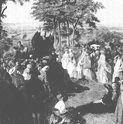
Oxford Methodist George Whitefield brought the “Great Awakening” to this area in 1747. A generation later, Philip Wm. Otterbein and Robert Strawbridge came to spread the Gospel, in German and in English respectively, from the western shore of the Chesapeake to the headwaters of the Potomac, leaving behind chapels such as the Geeting Meetinghouse on Antietam Creek and the Strawbridge meetinghouse on Sams Creek (commemorated at the Strawbridge Shrine). These were the first chapels of the United Brethren and Methodists in America.
1776-1803: Conference Foundations

Maryland disestablished the Church of England in its 1776 Declaration of Rights, and recognition of American Independence effectively ended the interest of English bishops in 1783. The 1784 Christmas Conference at Lovely Lane Meetinghouse in Baltimore established a new church without state support and elected its first bishop, Francis Asbury. Cokesbury College opened two years later as the first, albeit abortive, Methodist College in America. As their Reformed Church broke ties with its Dutch parent, Annual Conferences began in 1789 at the Otterbein Church leading to a new church among the Germans, the United Brethren, established in 1800 in western Maryland.
1803-1824: Camp and Cross Roads
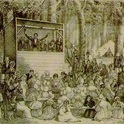
In 1803, the Camp Meeting Movement crossed from the frontier into the bounds of the Baltimore Conference. Bishop Otterbein died in 1813, and Bishop Asbury in 1816, his remains returned to Baltimore for reburial. The establishment of seven second-generation conferences moved the Methodists church’s geographic center westward, but Baltimore was the site of all but one of its General Conferences through 1824.
1824-1844: Breaking Bounds
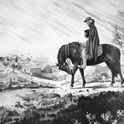
The “Second Great Awakening” built on the camp meeting movement and gained momentum after 1820. The new ME Pittsburgh Conference took from Baltimore the Monongahela and Allegheny valleys, but left behind the Shenandoah and much of the Susquehanna valley. The original UB Conference was also divided in 1831, splitting Maryland at the Monocacy, the Hagerstown side joined to Virginia and Baltimore side to Pennsylvania, while discontent in the growing ME Church led to the first General Conference of the Methodist Protestant [MP] Church at Baltimore in 1830.
1844-1864: Faith in a House Divided
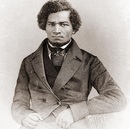
This border territory was at the center of controversy in the antebellum era. When the Methodist Episcopal Church split north and south in 1844, the Baltimore Conference went with the North. Abolitionists such as Frederick Douglass, who had escaped from slavery in Baltimore, chastised northern Methodists for their ties to slaveholding Maryland and Virginia. In 1857, East Baltimore, the northern tier of Maryland counties and central Pennsylvania became the East Baltimore Conference. In1860 the Methodist Episcopal Church [North] banned slaveholding among its members. When Bishop Levi Scott brought word of this to the next Baltimore Annual Conference, meeting at Stanton, Virginia, he was deposed and the majority voted to leave the northern church.
1864-1887: Education and Reconstruction
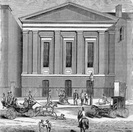
The Washington Conference convened in the fall of 1864, on the eve of Emancipation in Maryland. The new conference opened a Home for the Aged (later the N.M. Carroll Home) and its churches were often associated with schools for the freed men and women. Educational institutions of all sorts were founded by Methodists: Centenary Biblical Institute (later Morgan State University) and Western Maryland College (later McDaniel College) in 1867, Westminster Seminary on the Western Maryland campus in 1882, and the Women’s College of Baltimore (later Goucher College) in 1885. Permanent summer family camps were opened at Emory Grove north of Baltimore in 1868 and Washington Grove north of Washington in 1875.
1887-1914: Progress and Reform
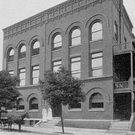
The Social Gospel was preached in this Progressive era, promoting health and temperance and combating crime and corruption. From a Manse in Baltimore United Brethren Bishops oversaw Virginia and Pennsylvania Conferences and for fourteen years a small (Western) Maryland Conference. Among Methodists, the Methodist Home of the District of Columbia opened in 1889 followed, six years later, by Sibley Memorial Hospital. The existing Maryland General Hospital with its attendant Nursing School was acquired by members of the various conferences of the region in 1911. The American University, chartered by Congress in 1893, was opened to students in 1914.
1914-1933: Patriotism and Prohibition
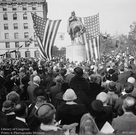
When the U.S. entered the First Word War in 1917, Protestant Churches formed the General Commission on Army & Navy Chaplains, chaired by Washington Area Bishop Wm. Frazier McDowell. After the war, the hopes of many Progressives were realized with passage of Alcohol Prohibition and Women’s Suffrage in 1920. Methodism’s place in the nation’s capitol was enshrined in the opening of The Methodist Building on the Capitol Square in 1923, and the dedication of an equestrian Sculpture of Francis Asbury on 16th Street in 1924. Child Care institutions multiplied with the openings of the Swartzell Home for Children in 1917, the Strawbridge Home for Boys in 1924, and the new Kelso Home for Girls in 1925.
1933-1946: Unity and Adversity
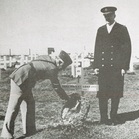
The Great Depression brought hardship to everyone and the repeal of Prohibition in 1933 was particularly depressing to those who had fought for the law. In 1939 other hopes were realized with the reunion of the Methodist Protestant and both Methodist Episcopal Churches. When the U.S. entered the Second World War in 1941, Washington Area Bishop Adna Wright Leonard chaired the General Commission on Chaplains but, on an inspection tour in 1943, was killed in the crash of a military transport plane.
In 1943, the three Children’s Homes were brought under a Board of Child Care and two years later three Methodist Homes for the Aged were consolidated in the Asbury Home. Finally, in 1946, the United Brethren and Evangelical churches were united in the Evangelical United Brethren Church.
In 1943, the three Children’s Homes were brought under a Board of Child Care and two years later three Methodist Homes for the Aged were consolidated in the Asbury Home. Finally, in 1946, the United Brethren and Evangelical churches were united in the Evangelical United Brethren Church.
1946-1964: Prosperity and Struggle

The years after the war were ones of prosperity for the churches, but also ones of struggles to extend that prosperity to all. Outward migration from Baltimore and Washington created a boom in church building in the surrounding suburbs.
Beyond the suburbs, four camp sites were acquired Camps Lothian and West River in the east, Camps Manidokin and Harmison in the west. Unlike the old camps such as Washington Grove (which had incorporated itself as a municipality in 1937), the new camps were dedicated to youth work. In 1958, Wesley Theological Seminary moved to the campus of American University from that of Western Maryland College (where it had originated as Westminster Seminary in 1882). In 1960, the Board of Child Care consolidated its three homes at Rockdale west of Baltimore.
Beyond the suburbs, four camp sites were acquired Camps Lothian and West River in the east, Camps Manidokin and Harmison in the west. Unlike the old camps such as Washington Grove (which had incorporated itself as a municipality in 1937), the new camps were dedicated to youth work. In 1958, Wesley Theological Seminary moved to the campus of American University from that of Western Maryland College (where it had originated as Westminster Seminary in 1882). In 1960, the Board of Child Care consolidated its three homes at Rockdale west of Baltimore.
1964-1984: United Methodism
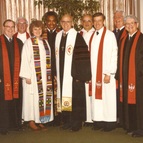
Despite the movement toward church union, the area’s conferences remained divided, geographically in the EUB and racially in the Methodist Church. As Schools and other institutions began slowly to desegregate. Though its clergy and lay leaders had helped lead many Civil Rights demonstrations, such as the great 1963 March on Washington, the Methodist Church was mired in old divisions.
Finally, in 1964, as it prepared for union with the EUB, its General Conference authorized the desegregation of conferences.
The Baltimore and Washington Conferences merged in 1965, and four years later absorbed portions of the EUB Susquehanna and Virginia Conferences. In 1970 the united conference had over 800 churches with over 250,000 members.
Finally, in 1964, as it prepared for union with the EUB, its General Conference authorized the desegregation of conferences.
The Baltimore and Washington Conferences merged in 1965, and four years later absorbed portions of the EUB Susquehanna and Virginia Conferences. In 1970 the united conference had over 800 churches with over 250,000 members.
1984-2000: Bicentennial and Millennium
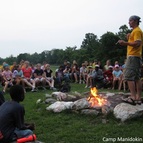
United Methodists gathered in Baltimore in 1984 to celebrate the Bicentennial of the Christmas Conference while looking forward to the next Millennium. Forrest Stith and Susan Morrison served in the Conference Cabinet before being elected to the episcopacy in 1984 and 1988 respectively. Joseph Yeakel became the first bishop of EUB background to preside in this area in 1984 and Felton May became the first African-American to preside over the Baltimore-Washington Conference in 1996.
